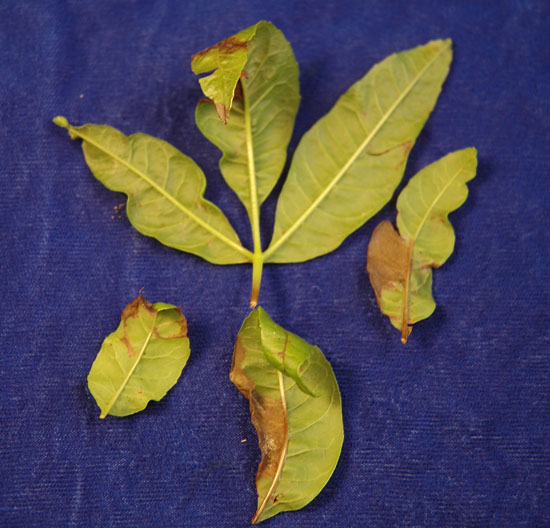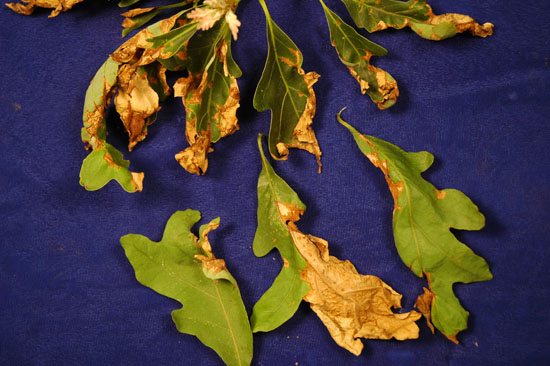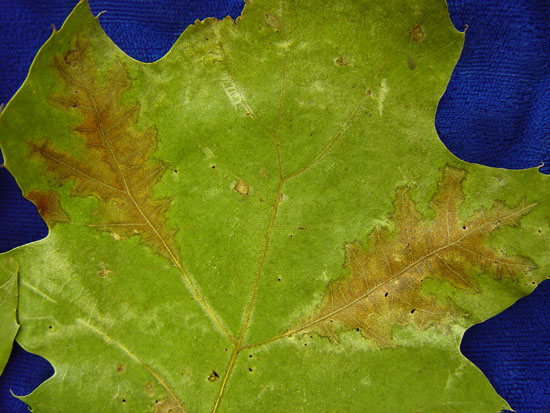Issue 3, May 9, 2011
Watch Out For Anthracnose
Rains have been plentiful and temperatures have been cool. This weather has been ideal for the development of anthracnose on shade trees just as tender leaves are first developing. Anthracnose causes water-soaked leaf spots ranging in color from dark green to brown. Some tree species, such as ash, oak, maple, and sycamore, may also form small twig cankers where anthracnose fungi may reside.

Anthracnose on ash tree leaves.

Anthracnose on oak tree leaves.

Anthracnose on maple tree leaf.
This disease is most prevalent in the spring because conditions are conducive to fungal development, while slowing plant development. Leaves emerging in warmer, drier conditions usually escape the disease. Conditions needed for infection vary with the host and the fungus. For most, the critical period for primary infection is the 2 weeks after budbreak.
Unless anthracnose fungi have repeatedly hit a tree or a very young tree is involved, we do not recommend using fungicides. Dogwood anthracnose is another story altogether. Look for dogwood anthracnose in June. It can cause extensive damage, and fungicides are recommended.
There can be differences in susceptibility to anthracnose within species. In addition, hybrids and cultivars within species can vary in resistance. Unfortunately, Plantanus species (Sycamore or Plane/Plane trees) are very susceptible to this disease.

Anthracnose on sycamore twig.
In general, anthracnose diseases do not kill trees; but repeated infections can weaken trees, making them susceptible to other problems. Some defoliation may occur, but refoliation with healthy leaves follows in warmer weather. Concentrate on boosting tree vitality, which promotes new growth. Prune in and around the tree to open it to better air movement. Remove dead or dying branches, water in periods of drought, and mark calendars now to fertilize affected trees in the fall. Watering in summer drought is probably the best advice we can give to help infected trees.
You might confuse anthracnose with late frost damage. Anthracnose generally causes more discrete spotting on the leaf blade; it occurs where air movement is slow and relative humidity high--most severe near the bottom and inside of the canopy. Frost injury is more likely on branch tips or near the canopy top--areas more exposed to weather conditions. For more information, see Report on Plant Diseases, no. 621 (Adobe PDF). (Stephanie Porter)
Author:
Stephanie Porter